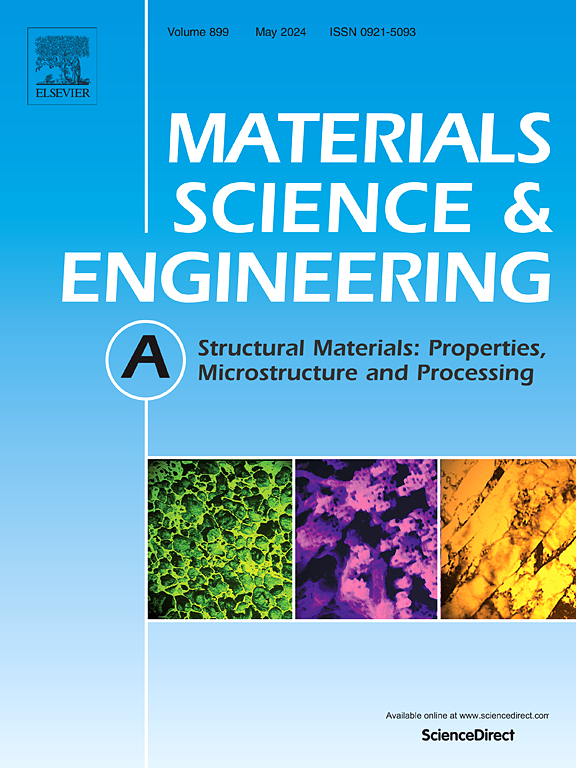通过集成双非均质结构增强多层铝的强度-延性协同作用
IF 6.1
2区 材料科学
Q1 MATERIALS SCIENCE, MULTIDISCIPLINARY
引用次数: 0
摘要
定制多类型或多尺度非均质结构为克服金属材料的强度-延性权衡提供了一条有希望的途径。在本研究中,通过简单控制退火温度,在AA3003/AA1060多层铝中形成了双非均质结构,协同了多层框架内的双峰晶粒分布(细/粗晶粒与微观尺度对比)。与单层多层样品相比,双非均相样品在均匀伸长率方面有显著提高(从9.8%提高到15.5%),而屈服强度仅略有降低(约13 MPa)。综合显微组织分析表明,AA3003层内纳米分散体的重新分布使部分再结晶晶粒优先生长,导致双峰结构的形成。通过对拉伸变形时的位错结构分析,发现双峰结构的非均质界面比常规层状界面能积累更多的几何必需位错(GNDs),并表现出更强的位错倍增能力。这些微观组织特征可以解释双非均相组织中加工硬化能力的增强。这项工作可以为异质金属的设计策略提供有价值的见解,旨在获得卓越的机械性能。本文章由计算机程序翻译,如有差异,请以英文原文为准。
Enhanced strength-ductility synergy in multilayered aluminum via integrating dual-heterogeneous structures
Tailoring multi-type or multi-scale heterogeneous structures offers a promising pathway to overcome the strength-ductility trade-off in metallic materials. In this study, a dual-heterogeneous structure is developed within AA3003/AA1060 multilayered aluminum via simply controlled annealing temperatures, synergizing bimodal grain distributions (fine/coarse grains with micro-scale contrast) within multilayered frameworks. Compared to the single multilayered sample, the dual-heterogeneous sample achieve a notable improvement in the uniform elongation (from 9.8 % to 15.5 %), with only a marginal reduction in yield strength (∼13 MPa). Comprehensive microstructural analyses reveal that tailored nano dispersoid redistribution within AA3003 layers enables preferential growth of partially recrystallized grains, responsible for the inclusion of the bimodal structure. By analyzing the dislocation structures upon the tensile deformation, it is found that the heterogeneous interfaces of bimodal structure can accumulate more geometrically necessary dislocations (GNDs) than conventional layered interfaces, also show a superior capacity of dislocation multiplications. These microstructural features can explain the enhanced work hardening capacity in the dual-heterogeneous structure. This work can contribute valuable insights into the design strategies for heterogeneous metals, aiming at a superior mechanical performance.
求助全文
通过发布文献求助,成功后即可免费获取论文全文。
去求助
来源期刊

Materials Science and Engineering: A
工程技术-材料科学:综合
CiteScore
11.50
自引率
15.60%
发文量
1811
审稿时长
31 days
期刊介绍:
Materials Science and Engineering A provides an international medium for the publication of theoretical and experimental studies related to the load-bearing capacity of materials as influenced by their basic properties, processing history, microstructure and operating environment. Appropriate submissions to Materials Science and Engineering A should include scientific and/or engineering factors which affect the microstructure - strength relationships of materials and report the changes to mechanical behavior.
 求助内容:
求助内容: 应助结果提醒方式:
应助结果提醒方式:


